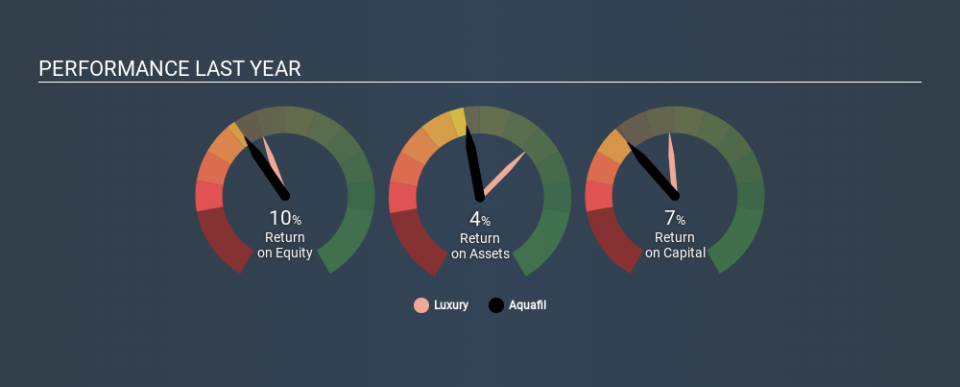Why Aquafil S.p.A.’s (BIT:ECNL) Use Of Investor Capital Doesn’t Look Great

Today we'll look at Aquafil S.p.A. (BIT:ECNL) and reflect on its potential as an investment. Specifically, we're going to calculate its Return On Capital Employed (ROCE), in the hopes of getting some insight into the business.
First of all, we'll work out how to calculate ROCE. Next, we'll compare it to others in its industry. Then we'll determine how its current liabilities are affecting its ROCE.
Return On Capital Employed (ROCE): What is it?
ROCE measures the amount of pre-tax profits a company can generate from the capital employed in its business. In general, businesses with a higher ROCE are usually better quality. Ultimately, it is a useful but imperfect metric. Author Edwin Whiting says to be careful when comparing the ROCE of different businesses, since 'No two businesses are exactly alike.
How Do You Calculate Return On Capital Employed?
Analysts use this formula to calculate return on capital employed:
Return on Capital Employed = Earnings Before Interest and Tax (EBIT) ÷ (Total Assets - Current Liabilities)
Or for Aquafil:
0.07 = €34m ÷ (€637m - €148m) (Based on the trailing twelve months to September 2019.)
Therefore, Aquafil has an ROCE of 7.0%.
Check out our latest analysis for Aquafil
Does Aquafil Have A Good ROCE?
ROCE can be useful when making comparisons, such as between similar companies. Using our data, Aquafil's ROCE appears to be significantly below the 11% average in the Luxury industry. This performance is not ideal, as it suggests the company may not be deploying its capital as effectively as some competitors. Separate from how Aquafil stacks up against its industry, its ROCE in absolute terms is mediocre; relative to the returns on government bonds. It is possible that there are more rewarding investments out there.
We can see that, Aquafil currently has an ROCE of 7.0%, less than the 11% it reported 3 years ago. So investors might consider if it has had issues recently. You can see in the image below how Aquafil's ROCE compares to its industry. Click to see more on past growth.
When considering ROCE, bear in mind that it reflects the past and does not necessarily predict the future. ROCE can be deceptive for cyclical businesses, as returns can look incredible in boom times, and terribly low in downturns. ROCE is only a point-in-time measure. What happens in the future is pretty important for investors, so we have prepared a free report on analyst forecasts for Aquafil.
How Aquafil's Current Liabilities Impact Its ROCE
Short term (or current) liabilities, are things like supplier invoices, overdrafts, or tax bills that need to be paid within 12 months. The ROCE equation subtracts current liabilities from capital employed, so a company with a lot of current liabilities appears to have less capital employed, and a higher ROCE than otherwise. To counteract this, we check if a company has high current liabilities, relative to its total assets.
Aquafil has total assets of €637m and current liabilities of €148m. As a result, its current liabilities are equal to approximately 23% of its total assets. This very reasonable level of current liabilities would not boost the ROCE by much.
The Bottom Line On Aquafil's ROCE
If Aquafil continues to earn an uninspiring ROCE, there may be better places to invest. You might be able to find a better investment than Aquafil. If you want a selection of possible winners, check out this free list of interesting companies that trade on a P/E below 20 (but have proven they can grow earnings).
For those who like to find winning investments this free list of growing companies with recent insider purchasing, could be just the ticket.
If you spot an error that warrants correction, please contact the editor at editorial-team@simplywallst.com. This article by Simply Wall St is general in nature. It does not constitute a recommendation to buy or sell any stock, and does not take account of your objectives, or your financial situation. Simply Wall St has no position in the stocks mentioned.
We aim to bring you long-term focused research analysis driven by fundamental data. Note that our analysis may not factor in the latest price-sensitive company announcements or qualitative material. Thank you for reading.

 Yahoo Finance
Yahoo Finance 
